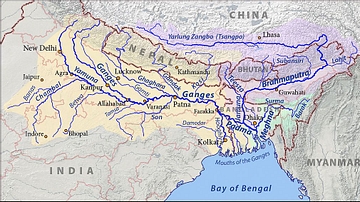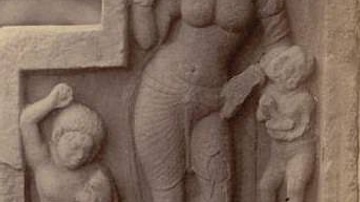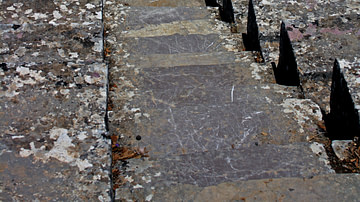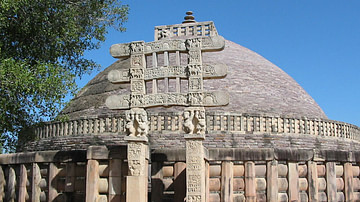Search Images
Browse Content (p. 1560)

Image
The River Ganges
The course of the River Ganges. Beginning in the Himalaya it runs for 2,700 km to the Bay of Bengal.

Image
Ganga
Ganga, the Hindu personification of the River Ganges. A sandstone lintel from a temple at Beshnagar, c. 500 CE. The goddess stands on a makara (a mix of crocodile and elephant) which symbolises the life-giving nature of water.

Image
The Theatre of Epidaurus
A view of the orchestra of the Theatre of Epidaurus taken from the steps of the audience seats.

Image
Manikarnika Cremation Ghat, The Ganges
The Manikarnika Cremation Ghat on the Ganges river, Varanasi, Uttar Pradesh, India.

Image
Sanchi Stupa
The Great Stupa at Sanchi, 3rd century BCE to 1st century CE.

Image
Cave 19, Ajanta, Deccan
The chaitya facade of Cave 19, Ajanta, north-west Deccan, India. The columned porch, cushion column capitals, and ornate decorative sculpture are typical of Gupta architecture (4-6th century CE). The relief panels show scenes from the life...

Image
Udayagiri Caves, Madhya Pradesh
The Udayagiri caves in Madhya Pradesh, India. The rock-cut caves were constructed in the early Gupta Period (4th century CE) and functioned as Hindu shrines.

Image
Vishnu as Varaha, Udayagiri Caves
A sculpted panel at the Gupta-period (4th-6th century CE) caves of Udayagiri, Madhya Pradesh, India. The caves are rock-cut Hindu shrines and this panel shows Vishnu as the boar-headed incarnation Varaha. The god rises from the cosmic waters...

Image
Vishnu Anantasayana Panel, Dashavatara Temple, Deogarh
The Vishnu Anantasayana panel, Dashavatara Temple, Deogarh. 5th-6th century CE. The Gupta-period sculpture adorning the temple includes many images from Hindu mythology. This celebrated panel from the south wall of the temple has Vishnu reclining...

Image
Dashavatara Temple, Deogarh
The Gupta style Dashavatara temple, Deogarh in Madhya Pradesh, India. 5th-6th Century CE.